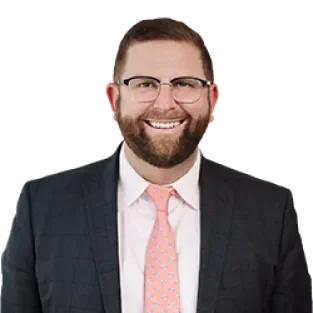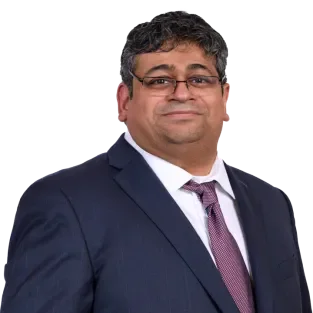ASAP
New York Department of Health Extends Deadline and Issues Additional Guidance for Health Care Worker Bonus Program
In early August, the New York State Department of Health (DOH) announced and opened the New York Health Care Worker Bonus (HWB) Program, which provides $1.2 billion dollars in health care worker bonuses to eligible employees. On August 29, the DOH issued updated guidance and addressed a number of questions raised under the Program. Notably, the DOH is affording employers a grace period for submitting claims for the first vesting period. The first vesting period was previously slated to close this Friday, September 2, but has now been extended to October 31. Employers impacted by this Program should review the updated FAQs and consult with employment counsel to ensure compliance with the requirements of the complex processes involved.
Providing several updates and clarifications to the Program in response to thousands of inquiries and phone calls, the DOH recently supplemented previously issued guidance. While we encourage all qualified employers under the Program to review the updated guidance in detail, notable updates are set forth below:
Extended Deadline for First Vesting Period
Acknowledging that employers may not be able to complete the claims process for the first vesting period before the upcoming September 2, 2022 deadline, the DOH provided a grace period for filing claims for the first vesting period, allowing such claims to be submitted during the submission period for Vesting Period 2 (between October 1 and October 31, 2022):
Q. I am a qualified employer who is unable to complete my submission of qualified employees in the HWB Portal for Vesting Period 1 by September 2, 2022. Can I submit employees eligible for a bonus for Vesting Period 1 at a later date?
A. The Department acknowledges some Providers may not be able to complete Vesting Period 1 claims by the close of the first vesting period (September 2, 2022)
For Vesting Period 1 employers will be able to submit claims for Vesting Period 1 during Vesting Period 2
• Employers should make every attempt to submit claims for Vesting Period 1 as soon as employee is eligible
• Employers must validate that employee(s) met all other qualifying criteria during the respective vesting period
• The HWB Portal will be closed for submissions from September 3, 2022 – September 30, 2022, but Providers may submit for Vesting Period 1 during the Vesting Period 2 Submission period which begins on October 1, 2022, and ends October 31, 2022
• An extension to submit for Vesting Period 1 will be limited to only the submission close date for Vesting Period 2 (October 31st)
Contract Staff Now Eligible
While earlier guidance under the Bonus Program indicated that contract and temporary staff were excluded from the Program, in an apparent reversal, the DOH guidance was updated to provide the following:
Q. Are contract staff eligible for the bonus? If they are, who is responsible for submitting these staff for a bonus? For example, if a hospital employs staff that fall under one of the eligible titles but are co-employed with a non-healthcare entity, are they eligible for the bonus?
A. Contract staff in eligible titles may receive the HWB assuming all other requirements are met. For the purposes of the HWB program, qualified employers that have engaged in staffing arrangements to obtain workforce services (PEOs, and other third-parties) for employees engaging in front- line-hands on health care services in eligible employee titles are eligible for the HWB. The qualified employer, not the contracted agencies, must submit bonus claims for staff that perform work for the qualified employer under such arrangements and that otherwise meet the eligibility criteria to be an eligible employee.
The qualified employer is required to maintain records that demonstrate the employee was employed for the full vesting period. All qualified Medicaid employers must maintain contemporaneous records tracking all claims submitted for no less than six (6) years. The qualified employer must furnish such records upon request to the department, the Office of Medicaid Inspector General (OMIG), the US Department of Health and Human Services, and the deputy attorney general for Medicaid Fraud.
Managers and Supervisors Not Automatically Excluded
The DOH’s updated FAQs clarify that managers and supervisors can be eligible employees under the program if all the other requirements to be an eligible employee are met:
Q. Are management and supervisors, such as nursing, tech supervisors, dietary supervisors, that otherwise meet all eligible staff criteria eligible for bonuses?
A. Management and supervisors that also work under an eligible title and otherwise meet all criteria for eligibility may be eligible for the bonus. Management and supervisory responsibilities alone do not disqualify an employee from eligibility.
Former Employees/Employee Separation
Responding to a number of employer inquiries, the DOH has explained in the chart reproduced below whether a former employee of a qualified employer if still eligible for the bonus:
Separation Facts | Employee is Eligible | Employee is Not Eligible |
|---|---|---|
Vesting Period for Employee Attestation The employee vested, was employed at the time of the claim, and the employee continues to be employed when the employer receives the bonus payment. | ✔ | |
The employee vested, was employed at the time of the claim, and stays with the employer for at least 30 days after the employer received the bonus payment. The employer fails to pay the bonus within 30 days of receipt, then the employee leaves. | ✔ | |
The employee vested and before the employer submits a claim the employee is terminated by the employer. | ✔ | |
The employee vested, was employed at the time of the claim, and then the employee is terminated by the employer. | ✔ | |
The employee vested but the employee quits the employer prior to the bonus being claimed. | ✔ | |
The employee vested, was employed at the time of the claim but the employee left before the employer receives the bonus payment. | ✔ | |
The employee vested, was employed at the time of the claim and when the employer received the payment, but the employee leaves less than 30 days after the employer received the payment. | ✔ |
It appears that the DOH is drawing a distinction between employees who are “terminated” by an employer versus an employee who “leaves,” but the DOH has not elaborated further about the distinction noted in its guidance.
Enforcement
The August 29th guidance highlights, for the first time, the enforcement scheme for the Bonus Program and explains that audits, investigations and reviews of qualified employers’ claims will be conducted by the DOH, the Medicaid Inspector General, the NYS Department of Labor, the U.S. Department of Health and Human Services, and the Attorney General’s Medicaid Fraud Control Unit.
The DOH’s updated FAQs explain that employers that fail to claim bonuses “are subject to sanction, up to and including exclusion from the Medicaid program.” While employers are subject to such an array of enforcement and significant financial consequences, the DOH explained that ineligible employees who receive bonuses will be allowed to keep the funds, but reimbursement will be sought from the employer—and the employer will not be able to recover any inappropriately paid bonus from an employee.
Home Care Workers Remain Ineligible for Bonuses
Despite reports of significant disappointment and opposition from home care aides and their representatives, DOH guidance remains that such employees are not eligible for the bonus program as they are eligible for a wage increase that goes into effect in October of this year under Public Health law §3614-f. The DOH did continue to note that other workers at home care agencies who provide hands-on services may be eligible for the bonus if they meet all of the employee eligibility requirements.
Employee Eligibility
The updated FAQs also provide further guidance on which employees are eligible for the Program. New FAQs include calculations of the average weekly hours worked to determine employee eligibility, calculations of the annualized base salary for a vesting period, clarification of workers who are “patient-facing,” as well as guidance on how to consider workers who are employed by multiple employers.
Qualified Employers
The DOH also clarified the criteria to be a qualified employer, as emphasized below:
Q. Please clarify the criteria necessary for an employer to be subject to the Healthcare Workforce Bonus (HWB) Program?
A. The HWB statute provides two separate definitions of qualified employers, both of which are subject to the requirements of the HWB program.
• See SOS § 367-w(2)(b) and (c).
Under paragraph (2)(b), an employer is subject to the HWB program if they meet all of the four following criteria:
- They are a Medicaid enrolled provider;
- They bill for Medicaid services (either through FFS, managed care, or a 1915(c) waiver);
- Employ at least one eligible employee;
- A. Are included in the list of provider and facility types in the statute, OR
B. Are subject to a certificate of need (CON) process, OR
C. The provider serves at least 20% Medicaid enrollees.
The Department of Health is not prescribing a specific methodology to determine the 20% Medicaid threshold criteria. Employers must determine whether their organization complies with this requirement as part of the employer attestation required for HWB claim submission.
Conclusion
As is evident by the updated FAQs and the DOH’s weekly updated guidance, as the program starts, there are and will be numerous issues that arise that need guidance and further clarification. Employers navigating the Bonus Program should keep apprised of newly issued guidance and reach out to employment counsel and the DOH for answers to any questions or issues that arise.







